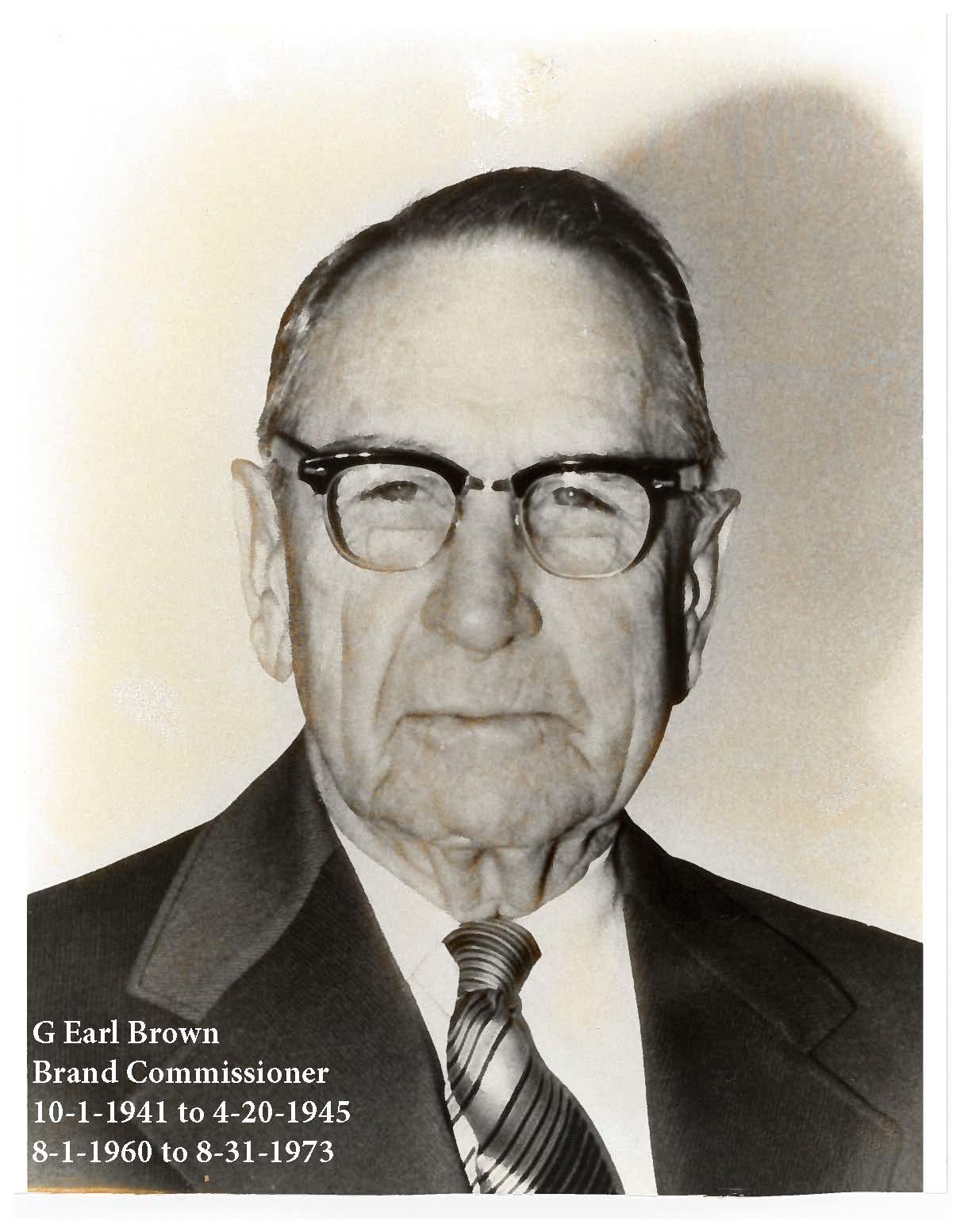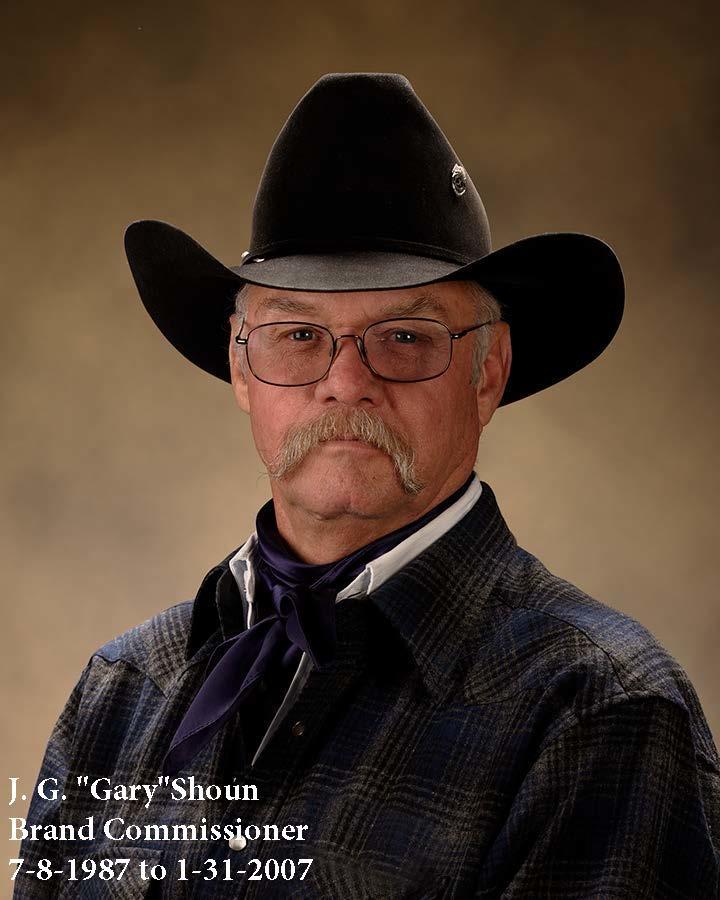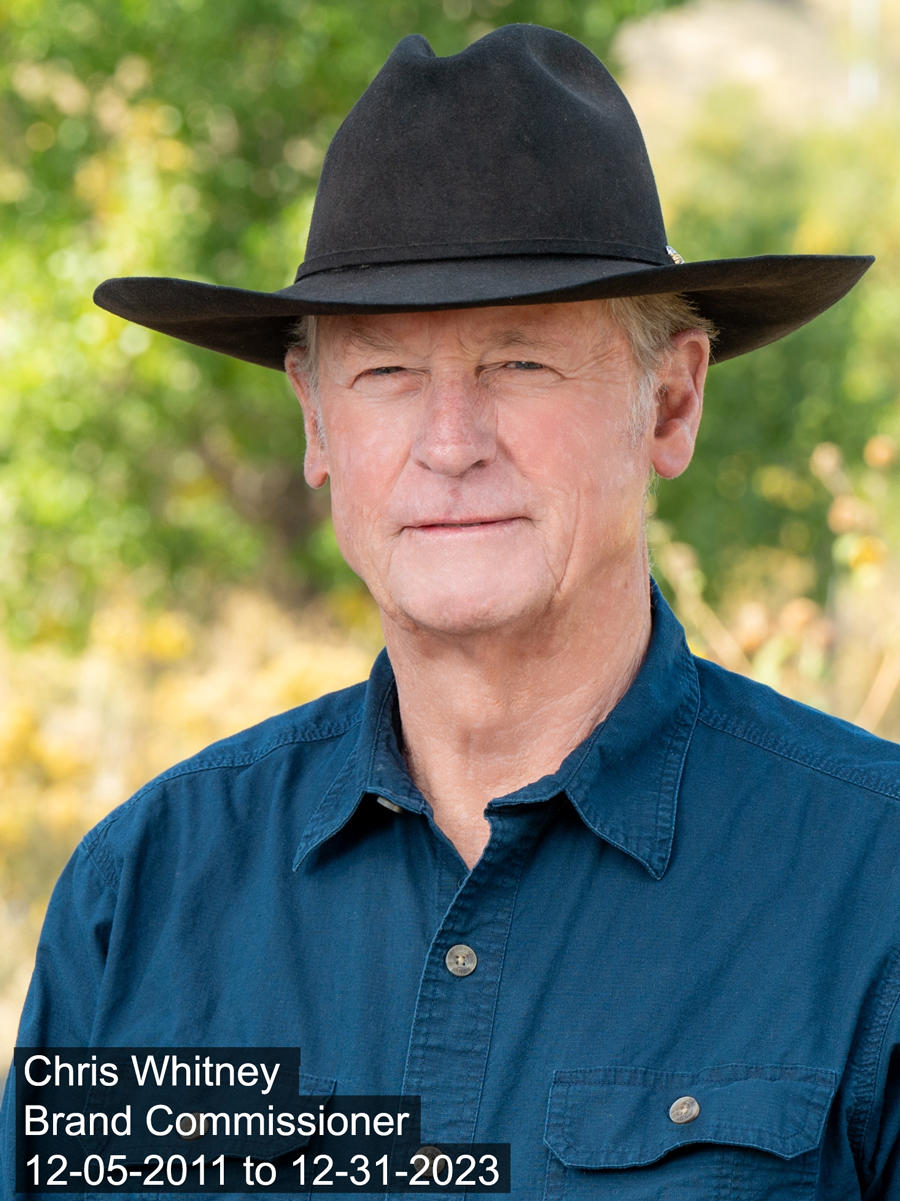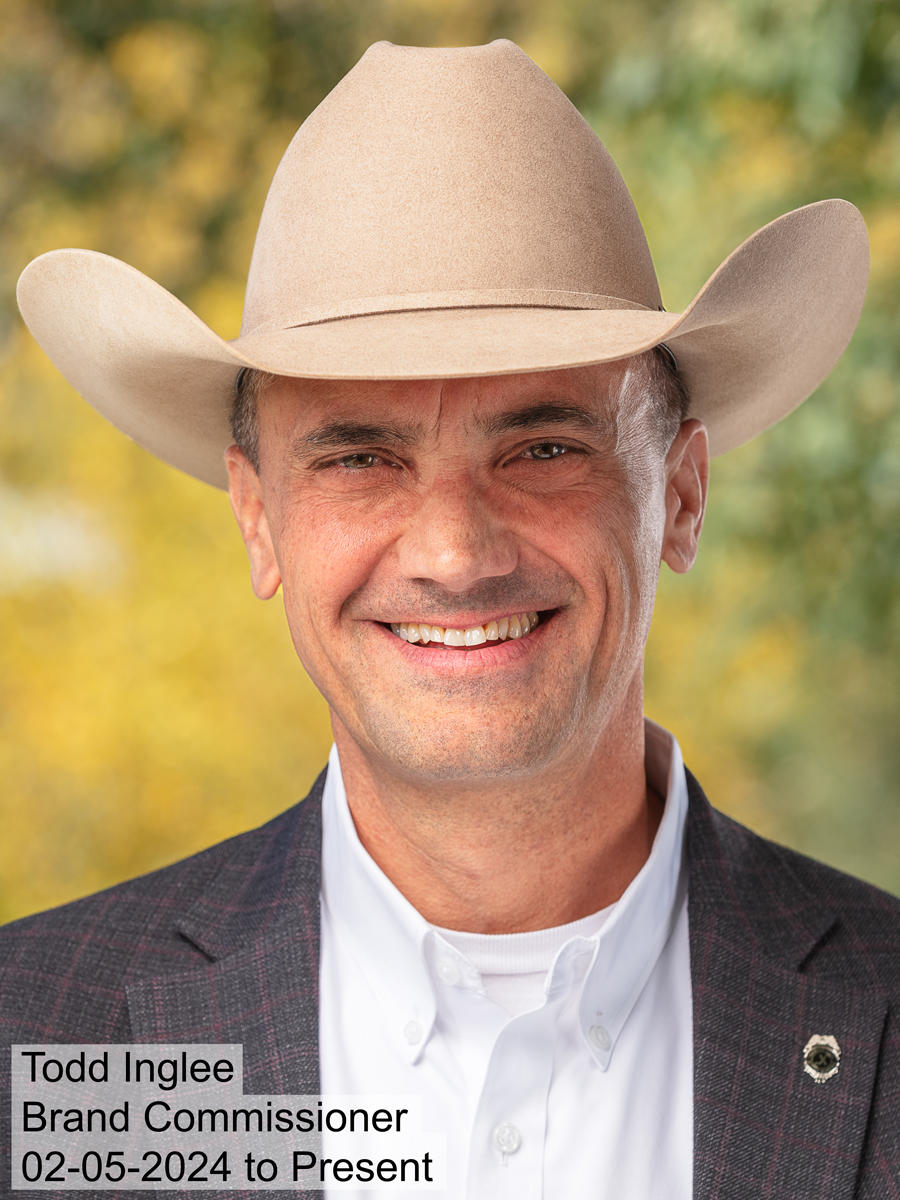About Brands
The Brand Inspection Division has six principal regulatory responsibilities:
- Deter the theft of livestock, return stolen or strayed livestock, and investigate reports of both;
- Inspect livestock and verify ownership before (i) any change of ownership, whether by sale or gift, (ii) transport over 75 miles within Colorado, (iii) transport to a location outside Colorado, (iv) transport to sale, and (v) transport to slaughter;
- License public livestock markets and inspect livestock consignments before sale to verify ownership;
- License certified feedlots and administer the certified feedlot program;
- License and inspect alternative livestock (elk and fallow deer) and alternative livestock facilities; and
- Research, record and administer Colorado’s approximately 30,000 registered livestock brands.
Brand Board Members
The State Board of Stock Inspection Commissioners (Brand Board) is a Type 1 board whose five members are appointed by the Governor to four-year terms. Two of the members represent the nonconfinement cattle industry, two represent the confinement cattle industry, and the fifth represents the commodity other than the confinement and nonconfinement cattle industries with the largest percentage of charged fees. Traditionally, that has been the equine industry. The Brand Board and Brand Inspection Division are 100% cash funded by fees and assessments paid by Colorado's livestock industries. We receive no general funds.
The Brand Board's principal responsibilities are to consult with and advise the Commissioner of Agriculture in appointing a brand commissioner who shall be under the Board's supervision and carry out its policies, and to make such rules and regulations not inconsistent with law concerning inspection of brands and livestock as it deems proper.
The members of the board are as follows:
- Lorene Frances Bonds - Durango
- Steven Wooten - Kim
- Natalie (Jody) Rogers - Yuma
- Erik Mohrlang - Fort Morgan
- Jodie Martin-Witt - Brighton
The board meets monthly unless, in case of emergency, a special meeting is deemed advisable. Brand Board meetings are generally held the third Tuesday of each month, unless otherwise noted and may be conducted in person or by conference telephone. All in-person meetings, unless otherwise noted, are held at: Colorado Department of Agriculture, Brand Inspection Division, 305 Interlocken Parkway, Broomfield CO 80021.
Brands History
State Board of Stock Inspection Commissioners (Brand Board)
The Brand Board has a long and proud history:
- Formed by Colorado’s livestock industry in approximately 1865, when Colorado was still a territory
- Became a state agency in 1903
- Became a division of the Colorado Department of Agriculture in the early 1970s
- Is comprised of 5 members who are appointed by the Governor.
Brand inspection serves several important purposes, including (1) deterring theft, (2) facilitating commerce, (3) protecting livestock producers and lenders, (4) providing accurate tracking of livestock movements for use in disease traceability, (5) facilitating the return of stolen or stray livestock, and (6) helping keep the livestock industry healthy and viable.
Some facts about the Brand Inspection Division:
- The Division has 68 men and women serving as brand inspector supervisors, brand Inspectors, and administrative personnel in 10 supervisory districts throughout Colorado’s 104,000 square miles.
- The Division is 100% cash funded by the livestock industry (from brand assessments and inspection and related fees) and has an annual budget of over $4 million.
- Division personnel annually travel over 1 million miles and inspect over 4 million head of livestock.
- The Division currently administers over 30,000 Colorado brands.







Laws and Regulations
Colorado Revised Statutes
Colorado Revised Statutes are made available for public use by the Committee on Legal Services of the Colorado General Assembly through a contractual arrangement with the LexisNexis Group. Any person wishing to reprint and distribute all or a substantial part of the statutes in either printed or electronic format must obtain prior permission of the Committee on Legal Services; permission is not required to reprint fewer than 200 sections of C.R.S. (please see §2-5-118, C.R.S.).
The Lexis Nexis website is the only official source of the Colorado Revised Statutes.
Instructions for using Lexis Nexis
- Title 35, Article 41: State Board of Stock Inspection Commissioners, Sections 35-41-100.3 to 35-41-104
- Title 35, Article 41.5: Alternative Livestock Act, Sections 35-41.5-101 to 35-41.5-117
- Title 35, Article 43: Branding and Herding, Sections 35-43-101 to 35-43-130
- Title 35, Article 44: Estrays, Sections 35-44-101 to 35-44-114
- Title 35, Article 46: Fence Law, Sections 35-46-101 to 35-46-115
- Title 35, Article 47: Livestock - Running at Large, Sections 35-47-101 to 35-47-103
- Title 35, Article 53: Transportation of Livestock, Sections 35-53-101 to 35-53-133
- Title 35, Article 53.5: Feedlot Certification, Sections 35-53.5-101 to 35-53.5-115
- Title 35, Article 54: Sale of Stock, Sections 35-54-101 to 35-54-106
- Title 35, Article 55: Public Livestock Markets, Sections 35-55-101 to 35-55-119
Value of Brand Inspection
Brands are livestock’s return address. They are important because:
• They provide evidence of ownership
• They deter theft
• They enable brand inspectors and law enforcement personnel to return stolen or missing livestock to their owners
• They help resolve conflicts over ownership
Livestock inspection (whether or not the animals are branded) is important because it:
• Deters theft
• Helps determine ownership
• Enables brand inspectors and law enforcement personnel to return stolen or missing livestock to their owners
• Prevents unlawful sale or transport of livestock
• Facilitates commerce by providing a system of checks and balances that is well understood and valued in the marketplace
• Helps protect the livestock industry by putting trained personnel in the field to keep an eye out for stolen or missing livestock
• Helps protect lenders and financial institutions that have an economic interest in the animals
• Creates an accurate record of livestock movement that is critical in instances of disease outbreak
• Assists livestock owners/transporters if stopped by brand inspectors or law enforcement agencies when hauling livestock